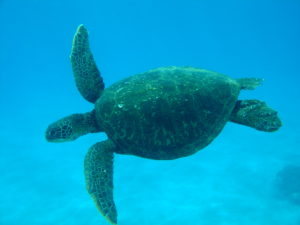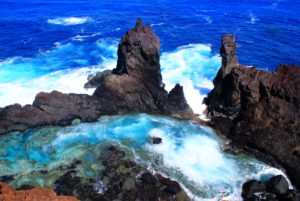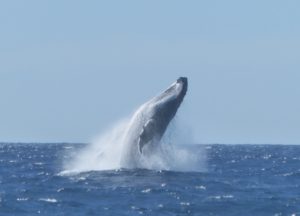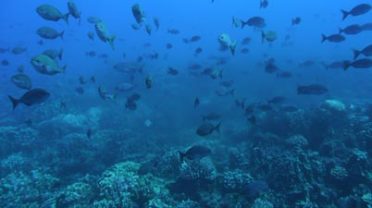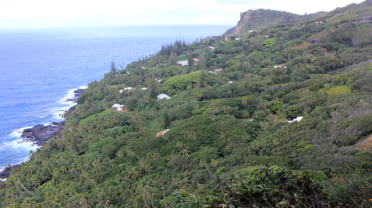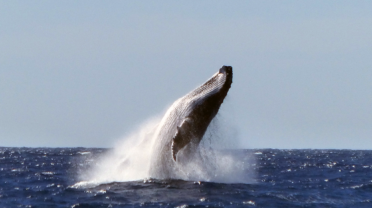Thanks to its extreme remoteness and historically small local population, the waters of the Pitcairn Islands are blessed with marine ecosystems that are almost perfectly intact. Pitcairn’s waters are also some of the clearest in the world, with visibility to 75 metres.
Pitcairn’s location at the far eastern edge of the Indo-West Pacific biogeographic province means that the diversity of marine species present is lower than at island groups further to the west. However, regional endemics make up a high proportion of fish assemblages here, resulting in unique species communities found nowhere else in the Pacific.
The waters surrounding the islands support 38 globally threatened species including green and hawksbill turtles, humpback whales, and humphead wrasse. Pitcairn’s waters are home to five endemic fish species, including the Henderson triplefin and the Pitcairn many-spined butterflyfish.
Oeno
Oeno is home to 58 species of coral, the highest of the Pitcairn group. Its marine environment is characterised by the presence of large numbers of giant clams embedded within its lagoon.
Shark numbers here are lower than at Henderson or Ducie. With its lack of local human population, the absence of sharks indicates that the waters surrounding Oeno may have been subjected to illegal fishing.
Pitcairn
Unsurprisingly, as Pitcairn is the only inhabited island, it has the lowest population of sharks and top predators of the Pitcairn Islands group. It is the only one of the four islands that shows prolific seaweed growth in its nearshore environment. This is largely due to periodic run-off of nutrients from the rich volcanic soil, something not found at the other islands.
Since around 1990, small numbers of humpback whales have been visiting the nearshore waters around both Pitcairn and Henderson between June and September, having migrated from the Antarctic. It has recently been confirmed that they are using the area for calving, as very small calves, only like to be a few weeks old, have been observed close to their mothers.
The seamount “40 Mile Reef” to the south east of Pitcairn, is known to be one of the deepest well developed coral reef communities in the world, with high levels of coral cover at over 75 m depth.
Pitcairn’s nearshore waters support a small local fishery, primarily for the islanders’ own sustenance, but also on occasion for sale to passing cruise ships and tourists.
Henderson
Henderson’s reefs are regarded as being in a near-pristine condition, with top predators accounting for 35% of fish biomass. Whilst coral cover is in some places patchy, Henderson is home to several huge “patch reefs” of up to 7 meters in height, which could be over 750 years old.
A small number of endangered green turtles have been known to nest on Henderson’s east beach, representing around 1% of the French Polynesian population.
Marine litter can be a problem on Henderson’s beaches, due largely to the Pitcairn Islands’ location within the Eastern South Pacific Gyre, which carries huge quantities of plastic and other floating marine debris.
Ducie
Ducie is characterised by exceptionally high coral cover and an abundance of top predators (accounting for 62% of fish biomass, which is one of the largest ever recorded worldwide). The atoll’s nearshore waters are also home to the highest percentage of endemics of the four islands. However, being the most remote of the four islands, Ducie also has the lowest species richness.
The 2012 National Geographic expedition to the Pitcairn Islands revealed the presence of encrusting algae at 312 metres depth off Ducie, making this the deepest known record of attached plant life on the planet.


 中文
中文 MY
MY ID
ID